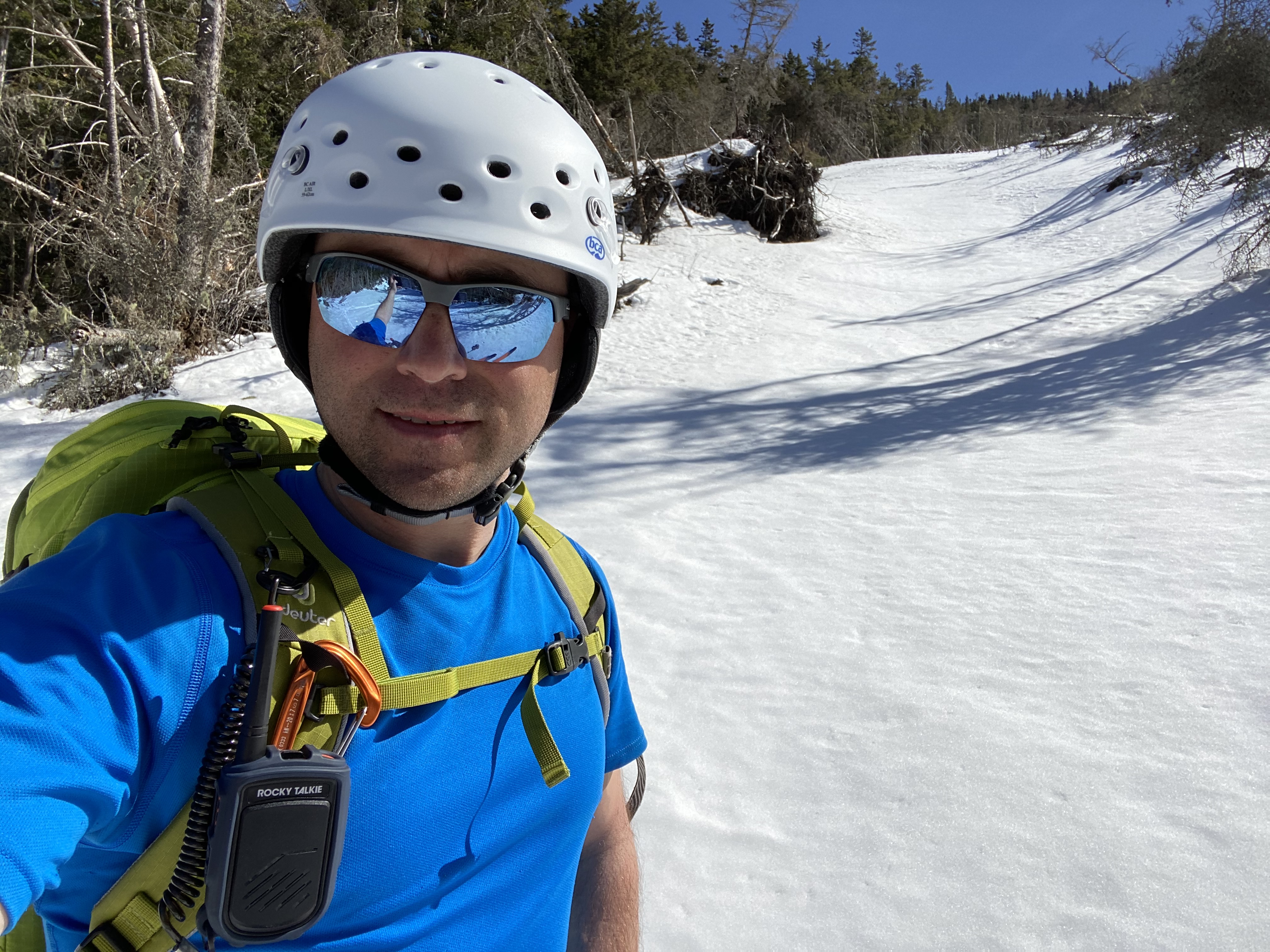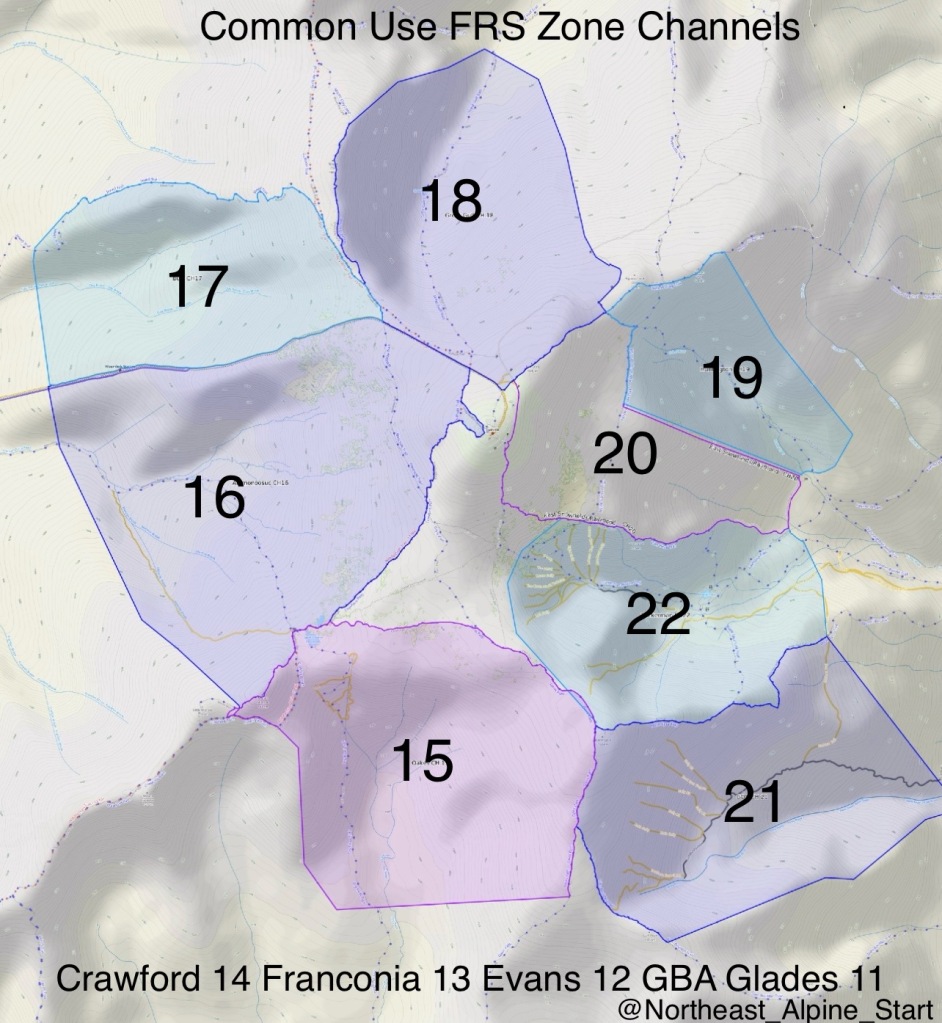
With the welcomed increase of backcountry travelers using FRS and GMRS radios for internal group communication it is time we utilize a “Common Use Zone” system to improve group to group communication in the most popular zones of our region.
Modeled after the Utah Avalanche Center’s “Group to Group Radio Channel Initiative” this system would be for these intended uses:
Intended Uses & Radio Protocols:
- A way for riders to communicate with people within their party and more importantly communicate with potential groups below and above you and your group.
- To send a distress call to your group and other parties to aid in self rescue and to alert of potential threatening avalanche hazards.
- To ask for someone to call 911 to mount an organized rescue, when 911 can’t be reached directly on your own.
- Radio communication between partners at areas of safety
- Radio communication regarding potential hazards, snow and avalanche information
- Radio communication when you and your group are clear of a given line or area
Radio Communication between you and your group:
- Radio communication between partners at areas of safety
- Radio communication regarding potential hazards, snow and avalanche information
- Radio communication when you and your group are clear of a given line or area
- General communication
Radio Communication between multiple groups:
- Route selection and timing to avoid riding directly above other groups
- Radio communication regarding potential hazards, snow and avalanche information
- Radio communication when your group is clear of a given line or area, alerting other groups of a clear run-out zone
- General communication
Here are some examples of the types of communication you might share or hear on these common use zone channels:
“This is Sarah on channel 21 reaching the ridge via the south snowfields. With no signs of instability and inconclusive hand shears our party of three is heading over to the top of Main Gully”
“This is Mark on channel 20, we just pulled out a small wind slab on our approach into Left Gully. Due to poor visibility we are transitioning here and dropping the bottom third of Left in a few minutes.”
“Mayday, mayday, mayday. This is Lisa on channel 19, we have a medical emergency near the base of Yale Gully. We are unable to raise 911. Does any one copy?”
The use of these radios does not take the place of solid decision making and carrying a Personal Locator Beacon like the Garmin inReach Mini 2 that can initiate a rescue if outside of both cell phone service and the limited range of FRS/GMRS radios.
It’s important to understand that most FRS radios are single channel monitoring. Some GMRS radios can monitor two channels simultaneously but may require a license.
The Common Use Zone Channel List*
| Tuckerman Ravine | FRS/GMRS Channel 22 |
| Gulf of Slides | FRS/GMRS Channel 21 |
| East Snowfields & Raymond Cataract | FRS/GMRS Channel 20 |
| Huntington Ravine | FRS/GMRS Channel 19 |
| Great Gulf | FRS/GMRS Channel 18 |
| Burt Ravine | FRS/GMRS Channel 17 |
| Ammonoosuc Ravine | FRS/GMRS Channel 16 |
| Oakes Gulf/Dry River | FRS/GMRS Channel 15 |
| Crawford Notch | FRS/GMRS Channel 14 |
| Franconia Notch | FRS/GMRS Channel 13 |
| Evans Notch | FRS/GMRS Channel 12 |
| GBA Glades | FRS/GMRS Channel 11 |
*No CT or Privacy Codes (0)
In order to send and receive traffic on these channels from other groups you must ensure your radio is not using a CT/DTS privacy code. Check your radio’s user manual on how to turn these privacy codes off (or set to zero).
Recommended Radios

Rocky Talkie Mountain FRS Radio <- My pick for 95% of people 10% off with “ALPINESTART10”
Rocky Talkie 5-Watt* FRS/GMRS Radio My pick for professional mountain guides, avalanche course instructors, search & rescue teams 10% off with “ALPINESTART10”
Backcountry Access BC Link 2.0 FRS Radio
Backcountry Access BC Link Mini FRS Radio
Motorola Talkabout T600 H20 2-Way FRS Radios
*Due to using over 2 watts of power of the Rocky Talkie 5-Watt* FRS/GMRS Radio requires licensing with the FCC. The process is quite simple online, took me about 30 minutes to complete, and cost $35. Detailed instructions how how to obtain a license can be found here. The above links are affiliate links which means if you purchase a radio through these links I will earn a small commission at no additional cost to you.
I’m hoping this suggestion becomes widely adapted by our backcountry community. Since a growing percentage of backcountry travelers are already carrying radios it makes good sense that we improve the overall communities safety by adapting a common use zone list like this.
ZONE MAP STICKERS! $2 each!

3 x 3 inch stickers of the zone map pictured above are available! Put one in your field book and on your skis or board! $2ea., free pickup in Conway, NH, or $1 S&H. Venmo preferred. Please include local pickup or shipping address with payment.
See you in the mountains,
Northeast Alpine Start
References
https://utahavalanchecenter.org/education/group-group-radio-channel-initiative
UTILIZING COMMON RADIO CHANNELS IN HIGH-USE AVALANCHE TERRAIN
Rocky Talkie List of Community Channels by State


Affiliate links above support this blog
